Entries Tagged 'baltimore' ↓
January 9th, 2010 — baltimore, business, design, economics, geography, philosophy, politics, trends
This week saw the ending of a tragic saga that has been decades in the making. Baltimore Mayor Sheila Dixon negotiated a plea agreement to obtain Probation Before Judgment in which she promised to resign as mayor within 30 days. She entered an Alford plea, in which she did not admit guilt but admitted that the prosecution had sufficient evidence to convict her.
But the real story here isn’t about Dixon; it is about the long-term systemic abandonment of public life by the American citizenry.
And I use that term loosely. Americans take a cynical eye towards civics and citizenship. Public servants are routinely portrayed as buffoons and as half-witted wards of the state. Politicians are universally derided as corrupt, megalomaniacal, and intensely self-interested. Depending on the election, Americans vote in anemic numbers. Children are no longer seriously raised with the idea that civic engagement or public service is a kind of higher calling.
We are now consumers of politics rather than participants in civic life. And the accompanying “fanboyism” that we see in consumer behavior has effectively destroyed intelligent political discourse. Presumably somewhere out there there is a sticker of Calvin Elephant pissing on a Democrat Donkey. Enough.
The Dilemma of the American City
A confluence of factors over the last 90 years has drawn people from the urban core to the suburbs: air quality, the invention of the automobile, the Great Depression, unchecked suburban planning, school policy, racial prejudice and realignment, blockbusting profiteers, the end of urban manufacturing, ineffective urban planning, drug use, tax imbalances, poor transportation infrastructure, and incompetent city governments.
This has resulted in cities that have neither the tax base nor the level of civic engagement required to operate. The politicians do not have the skill or vision to initiate meaningful change. The population wants improvement and change but is often unwilling to exchange their short term interest for any long-term good. Surrounding jurisdictions point fingers at the city, and the problems become self-reinforcing. For each day that our cities slog on in dysfunction, the more people are convinced that dysfunction is a permanent and intractable condition.
To change things in the long term, we need to attract people back into our cities. And there are workable strategic reasons why this is possible: cities provide real competitive advantage, particularly for industries based on ideas and information.
Urban Feudalism
It is not a coincidence that the graft case against Dixon was centered around her relationship with multiple developers. This 2008 City Paper article gives a good sense of the shadowy web of relationships surrounding the Mayor, her predecessor, and developers.
It requires a special kind of optimism to think that the gift cards, cash, and other baubles that Dixon received were anything other than bribes. While it is laudable to offer her the benefit of the doubt, the reality is that she did receive these gifts from developers. And developers have more impact on the design and function of our city than any other single business constituency.
While we can defend Dixon’s sincere love for her city, her ambitious agenda, her mostly-functional administration, and her political bravery, the tragic truth is that she fell victim to the inherent flaws of the very place that made her. The culture of personal gain over civic duty is pervasive and inescapable in Baltimore. And the government accurately reflects the values of its people.
Our cities plod along, hostage to the special interests and powerful “players” to whom we have consigned our urban future. We have enabled and continue to refine a new system of urban feudalism, its landscape populated by warlords each concerned with their own particular brand of self-interest. There is precious little difference between a corner drug dealer and the Mayor of Baltimore when everybody’s on the take.
A Path to Recovery
It is easy to complain about American public life and politics, and real solutions are hard to find. James Fallows argues in this Atlantic Monthly article that while the American system of government has been horribly hamstrung by special interests, the only hope we have is continued engagement. He argues that we cannot divorce public life and the private sector, as both fail when that happens.
I believe there may be yet another pathway forward, inspired by the great American thinker and architect Buckminster Fuller’s quote: “You never change things by changing the existing reality. Instead, build a new model that makes the existing reality obsolete.” If there is a way forward it is in this direction.
Public Life Without Politics
We have become accustomed to the idea that participation in public life comes only in the form of elected office or through lumbering nonprofit organizations. But there is an emergent form of public engagement centered around alignment behind ideas. The Internet has enabled likeminded people to converge both online and in the real world to achieve amazing goals, all without the burdens of machine politics and the slow-moving governance of nonprofits.
American cities offer an exceptionally strong opportunity for our country to return to competitiveness on the world stage. Compact, efficient, and diverse, our cities are platforms upon which we can design an economic life predicated on two key core values: respect for place, and respect for people and their time.
If we truly love our place and our people, competitive advantage will flow naturally from there. Embracing our cities is a pro-business agenda. It’s a future where everyone wins.
An Apolitical Future
Until recently, the flow of information to citizens has been imperfect and incomplete, and political parties have acted as proxies to enable people with similar values to coalesce.
But as information flow becomes more perfect and attitudinal alignment can occur in higher-resolution ways, political parties may no longer be effective channels for achieving important public goals.
To the extent that people can rally around goals and achieve real results using apolitical modern organizing efforts, we may find that the future of public life lies in individual action rather than in elected office or in nonprofit organizations.
Our country’s future demands that we find the answer.
November 7th, 2009 — art, baltimore, business, design, geography, philosophy, trends
In 1983 at age 12, I became drawn to the design and tech culture of San Francisco. By that time I was already deeply involved in computers and the other tech of the day, and had been reading every issue of BYTE Magazine cover-to-cover when it arrived in our mailbox after school.
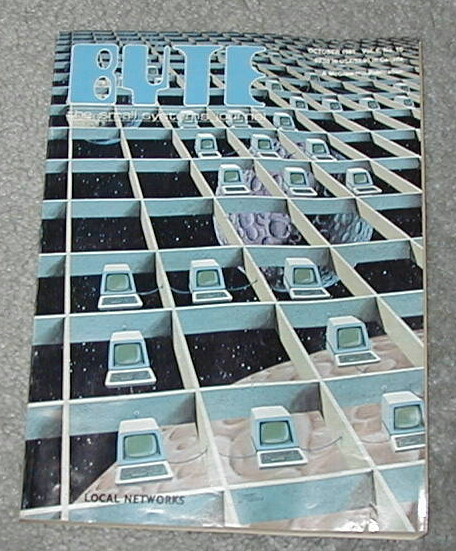
BYTE was produced in New Hampshire and had a scholarly tone; still, the emerging world of computing was breathlessly covered, and offered a sense of endless possibility. But it was Antic magazine (a specialty computing magazine for Atari computers), specifically the December 1983 “Buyer’s Guide” issue that really caught my eye.
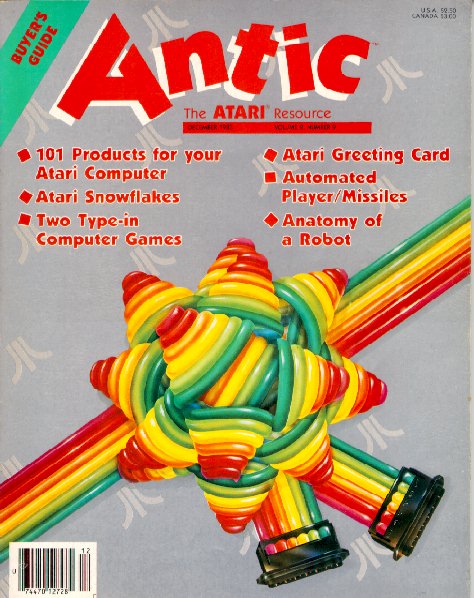
The design was colorful and imaginative, with beautiful typography, and the magazine was full of amazing ideas and products which I was sure would launch me on my way to unlimited exploration. I devoured the magazine cover to cover, but I never realized just how much I was soaking up its design ethos. Colorful, playful, and bold, this was not the wry, academic BYTE. It was combining the substance of tech with the emerging design scene in San Francisco, and it resonated with me profoundly.
In 1985, I got a job at a local computer store doing what I loved: selling computers and software and, yes, copies of Antic magazine. In 1986, I started my own computer and software sales company, Toad Computers. In 1989, months after graduating from high school, I had the chance to visit Antic Magazine — this time as an advertiser.
This was my first trip to San Francisco and I visited Antic at their loft office, located at 544 Second Street, right in the heart of the city’s SOMA district. But this was SOMA before it was the SOMA we know now as the home of so many startup tech companies. Beat up and edgy, the open-air second floor office had high-beamed ceilings and gave a sense of history and limitless potential. I was smitten with the city and with valley tech culture – I also visited Atari’s headquarters in Sunnyvale that trip – and absorbed all that I saw.
Later in 1993, I was twenty-one and searching for new things to explore. Toad Computers was doing well but I knew that it would have to change and grow to survive. Atari was having tough times. Antic magazine had folded. To advertise effectively we were sending out massive catalog mailings, featuring 56 page catalogs that I personally designed – very much in the visual style of Antic magazine.
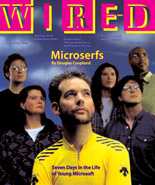
Someone had told me about a new magazine called Wired. I picked up a copy and was immediately struck with its sense of visual design and its aura of infinite possibility through the combination of design and tech. Again, I ingested every word, photo, and illustration in each issue. In early 1994, I noticed an ad that indicated that Wired – this tiny publishing startup – was looking for a circulation manager. I was entranced at the possibility. With my background in direct marketing and managing big catalog mailing lists, I thought this might be an opportunity for me.
In February 1994, I booked a trip to San Francisco to talk to my kindred spirits at Wired about the possibility of working there. I also became entranced with the Internet and its possibilities at this time, and for several days before my trip to San Francisco, I worked feverishly to write an article for Wired about how the Internet – when it became fully developed and evolved – could become a kind of real-time Jungian web of knowledge that acted like a global brain cheap kamagra oral jelly uk. I theorized that the Internet could become a kind of collective consciousness that enabled humanity’s genius to be available to everyone all the time. I predicted online banking, shopping, and video chat and made illustrations to show how these things would work.
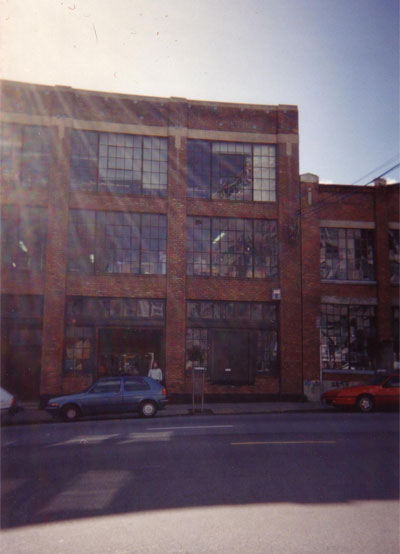
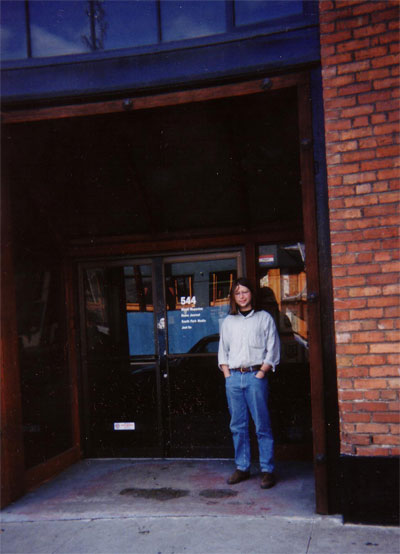
Me, with long hair, at Wired HQ in February 1994
Of course, the simple things were not hard to predict at that time, though they were still a few years off. But my central thesis about Jungian synchronicity was just too wacko to print in 1994. And to be fair, I had cobbled the article together in just a couple of days, had worked in ample quotes from Marshall McLuhan and Carl Jung, and had interviewed no one. My thesis may have been strong, but the piece would have benefited from some interviews and editing. But hey, I was inspired and twenty-two.
When I went to Wired’s offices, I was stunned to learn that they were located in the same office that Antic had occupied! The same open air loft office at 544 Second Street. I met with some folks from Wired’s barebones staff. I commented on my perceived sense of Jungian synchronicity — about Antic and Wired sharing the same office space. We talked about job possibilities. I submitted my article.
I didn’t get a job, and they didn’t print my article. To be fair, I wasn’t really ready to move to San Francisco, and I am sure they sensed that. I also wasn’t sure what I wanted. I just knew that I was drawn to this hopeful admixture of design and tech that seemed to emanate, radio-like, from 544 Second St.
In March 2007, two weeks after I had built Twittervision and a week after SXSW launched Twitter onto the early adopter stage, I thought it would be fun to stop by Twitter HQ in San Francisco. I met Biz and Jack and Ev, and was once again amazed to see that something I had been drawn to had come from SOMA; just a few blocks from 544 Second St. And ironically, it is now Twitter and the “Real Time Web” that is beginning to enable the kind of global consciousness that I had predicted in 1994.
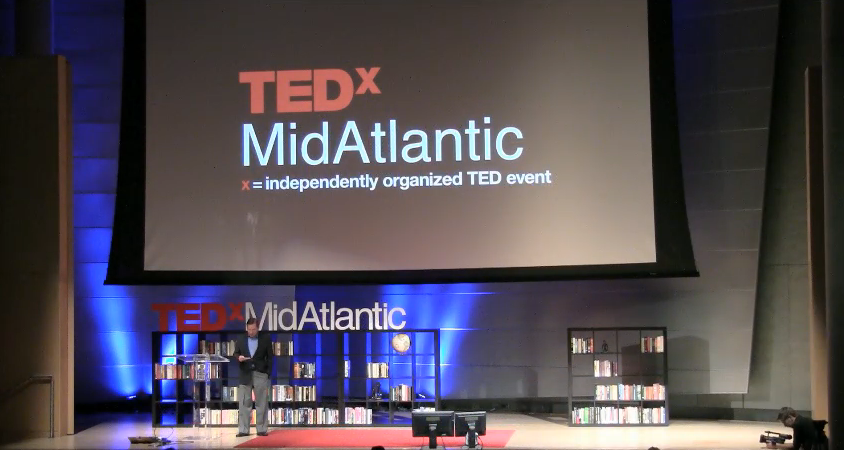
This past Thursday at TEDxMidAtlantic (of which I was the lead organizer and curator) in Baltimore, I was struck by the beautiful design of our stage set. (Thanks to Paul Wolman at Feats, Inc. for bringing it together for us!) A simple combination of bookshelves, cut lettering, books, a few objects and blue wash backlighting had combined to produce a gorgeous backdrop for the extraordinary ideas that our speakers would soon be sharing. And I felt at home. I could not go to 544 Second Street and SOMA. Instead, it was my mission to bring it here.
October 7th, 2009 — baltimore, business, design, economics, trends

You’re smart. You went to the right schools and got good grades, and that’s paid off with a nice job with a decent salary, a healthy upside, and some decent perks. Let’s say you make $125,000 per year.
Now let’s say you quit that job and spend three years founding a technology startup. At first it goes slowly, and things seem desperate. Then you get a break; then you hit it big. At year 5, your startup is worth $3 Million and attracts the attention of a bigger firm. They acquire your company.
So, if you stay in your job, you make $625,000 guaranteed, but you’re turning down a potential shot at a $3 Million exit. So your job is costing you $2,375,000 over the next 5 years. Worth it?
Think I’m wrong? What are you building in equity for the shareholders of the firm where you work? If it wasn’t a good deal for those shareholders, would they want you there?
Think it’s too risky? Sure, a ridiculous number of entrepreneurial enterprises fail, but failure cannot be counted strictly as downside. There is recoverable value in failure.
Too often people cite general statistics about entrepreneurial failure that include all entrepreneurs everywhere and in every sector; these metrics are all but anecdotal in nature. Be realistic in evaluating your chances. Not being stupid helps (we already established you’re smart), and your position in social networks likely has more to do with success or failure than any other factor (read this book).
And please don’t counter that I’ve inaccurately accounted for the capital required to create a startup, how “impossible” it is to get funding, and how doomed you might be for whatever reason before you start: startup capital requirements are lower than ever before – you can get started for as little as $10-$50K with a seed of an idea and the right partner.
Or is it that you’re “too big to fail?” Has your dependence on the lifestyle that The Man has meted out to you eclipsed your willingness to pursue something more valuable? Family, relationships, cars, mortgage payments, kids, restaurants, travel – call them what you will, but these responsibilities often become excuses for inaction.
Getting started young with entrepreneurial activity is a great way to avoid this trap; young people really have nothing to lose, especially teenagers, and it’s easier than ever for a teen to start something today.
While it’s perfectly possible to nurture a side project and wait for it to show signs of life before “quitting your day job,” the real opportunity for success comes in becoming a part of a network of entrepreneurs who are willing to take calculated risks together and that requires a full time commitment. Otherwise, you’re making a calculated decision to expose yourself to a much smaller chance of success. Why?
For every day that you accept payment in exchange for doing your employer’s bidding instead of something you’d rather be doing, you become less likely to take the bold steps necessary to succeed on your own.
What are you waiting for?
September 29th, 2009 — art, baltimore, business, design, economics, geography, social media
This was originally written as a guest post on Gus Sentementes’ BaltTech blog for the Baltimore Sun.
If you had 5 minutes on stage and 20 slides that rotate automatically every 15 seconds, what would you say? That’s the question that 48 presenters will answer at three upcoming Ignite events in Annapolis, D.C., and Baltimore.
Ignite was started in Seattle in 2006 by Brady Forrest and Bre Pettis, and is overseen by the technology book publisher O’Reilly. Since the founding of the program, hundreds of five minute talks have been given across the world.
The first Ignite event in the area, Ignite Baltimore, was organized in October 2008 by local entrepreneurs Mike Subelsky and Patti Chan and was an immediate success. Held at the Windup Space on North Avenue, the event has attracted standing room only crowds, and the upcoming Ignite Baltimore #4 has been moved to The Walters Art Museum in order to accommodate more people. Ignite Baltimore #4 will take place on Oct. 22. Ignite Baltimore was recently named “Best Geek’s Night Out” by Baltimore Magazine.
This week, the first Ignite Annapolis will be held at Loews Annapolis Hotel in their Powerhouse building. Ignite Annapolis is organized by Kris Valerio (Executive Director of Chesapeake Regional Tech Council, and local actress and theater director) and Jennifer Troy (local entrepreneur) and will take place on Thursday, Oct. 1. The event is sold out, but you may be able to get in if you show up early.
And next week, Ignite DC returns with its second event organized by Jared Goralnick (local entrepreneur and organizer) and Steve Lickteig (radio producer). That event will be held at Town Danceboutique, 2009 8th St NW and should feature several hundred people.
While a handful of well-connected area geeks will likely attend all three events, they are inherently local events designed to connect communities together, and really aren’t all that geeky. Topics span everything from art, history, science, philosophy, and of course, some tech and social media. But Ignite is designed to emphasize that tech has become inherently cross-discipline and is no longer the domain of just infotech nerds. So don’t be surprised when topics roam far and wide.
You can get a taste of Ignite by visiting http://ignite.oreilly.com/show/ and viewing some of the videos available there.
Upcoming Area Ignite Events
• October 1, 6:00pm – Ignite Annapolis, http://igniteannapolis.com
• October 8, 6:00pm – Ignite DC, http://ignite-dc.com
• October 22, 6:00pm – Ignite Baltimore, http://ignitebaltimore.com
Note that all three events are already sold out or close to sold out, so if you have not already registered, space will be very limited. However, you may be able to get in if you show up by 5:00. See the RSVP and waitlist policies for each individual event. And if you can’t make these events, get ready for the next round of Ignites, which will be happening early next year. Ignite Baltimore #5 is planned for the first week of March 2010.







